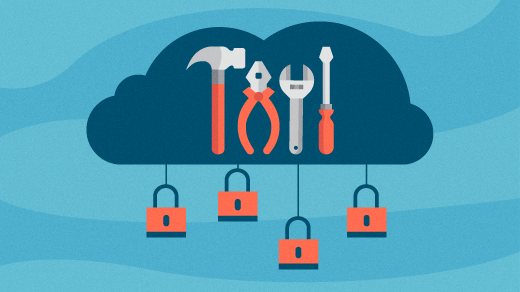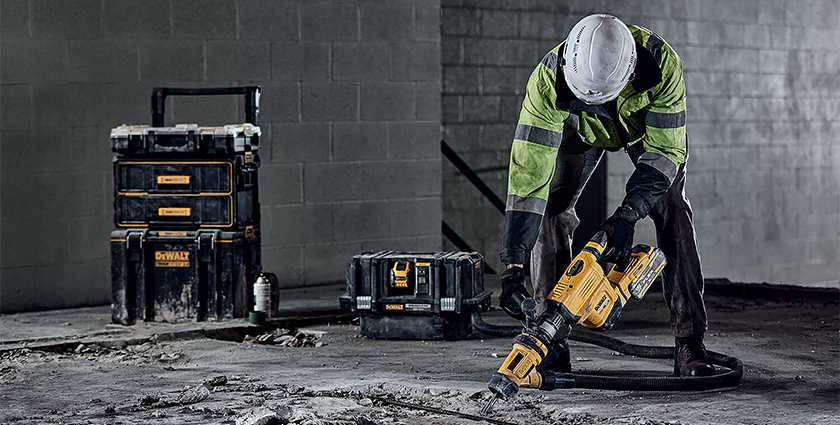
We Move, We Hold, Lift the Ground: Learn How Tool Security Can Impact the Construction Industry
In the construction world, tools and machinery are the backbone of nearly every project. From small residential buildings to large infrastructure developments, construction tools are indispensable. However, these tools are also valuable assets, which can be prone to theft, misuse, and damage. In this article, we will explore how tool security can significantly impact the construction industry, influencing not only the safety of workers but also the productivity, costs, and overall success of a project.
The Growing Importance of Tool Security in Construction
The construction industry is one of the most dynamic and fast-paced sectors. With a constant flow of workers, contractors, and subcontractors coming and going, the risk of theft and misuse of tools is a major concern. According to reports, construction sites are one of the most common places for tool theft, with tools often being stolen overnight or when not properly secured. This theft can result in significant financial losses, project delays, and even safety hazards if workers are left without the right tools to complete their tasks.
Tool security is therefore a critical element that every construction manager and site supervisor must prioritize. With the right systems in place, construction companies can safeguard their assets, protect their workforce, and ensure smoother project operations.
Financial Impacts of Poor Tool Security
One of the most direct consequences of poor tool security is the financial strain it places on a construction project. Construction tools, from drills and saws to heavy machinery, are expensive. When these tools are stolen, damaged, or go missing due to lack of proper security measures, the cost to replace or repair them can be substantial.
Beyond the immediate costs of replacing tools, there are also long-term financial impacts. If a project is delayed because workers cannot access the necessary tools, contractors may face penalties or lose contracts. Additionally, the downtime caused by having to replace lost equipment leads to inefficiencies that can ripple across the project timeline, pushing costs higher.
Enhancing Worker Safety with Tool Security
Safety is paramount on any construction site. Tools that are not stored or secured properly pose a major safety hazard to workers. For example, power tools that are left unsecured could fall or be tripped over, leading to accidents or injuries. Additionally, when tools are misplaced or improperly stored, workers might use incorrect or malfunctioning equipment, increasing the risk of injury.
Tool security ensures that workers have access to the tools they need when they need them, and it also helps maintain an organized, hazard-free environment. By using proper storage solutions, such as secure toolboxes, locked containers, and tagging systems, the risk of accidents and injuries can be minimized, promoting a safer and more efficient working environment.
Tools of the Trade: Technology-Driven Solutions
As technology continues to advance, so do the methods of securing tools on construction sites. Many construction companies are now turning to innovative technological solutions to enhance tool security. Some of the most popular technology-driven tools include:
- GPS Tracking Systems: These devices can be attached to expensive tools and machinery, allowing site managers to track their location in real-time. In case of theft or misplacement, the GPS system can quickly pinpoint the tool’s location, increasing the likelihood of recovery.
- Tool Management Software: This software allows construction companies to keep detailed inventories of all tools on-site. By using barcodes or RFID tags, workers and managers can easily check out and check in tools, ensuring that every item is accounted for. These systems also help in scheduling regular maintenance to keep tools in good working condition.
- Smart Locks and Tool Cages: Smart locks that are controlled via smartphone or digital access codes provide an added layer of security to tool storage areas. By limiting access to authorized personnel only, construction companies can prevent unauthorized use or theft of tools.
- Surveillance Systems: Security cameras strategically placed around the construction site can provide constant surveillance of tools and equipment. This not only acts as a deterrent to potential thieves but also helps in monitoring tool usage and ensuring that all safety protocols are being followed.
The Role of Workers in Tool Security
While technology can significantly improve tool security, the role of workers in maintaining this security is equally important. Workers must be trained to understand the significance of tool security and be vigilant in keeping tools properly stored when not in use. A culture of responsibility and accountability should be fostered, where each worker feels personally responsible for the security of the tools they use.
Regular checks should be performed to ensure that tools are in good condition, accounted for, and stored securely. Furthermore, tools should be properly maintained to prevent malfunctioning, which can lead to delays or accidents.
Preventing Theft and Loss of Tools
Theft is one of the most common problems faced by the construction industry when it comes to tool security. With construction sites being open and sometimes isolated, they are prime targets for thieves looking to take advantage of the lack of supervision. The best way to prevent theft is by implementing a combination of strategies:
- Lockable Storage: Ensuring that all tools are stored in lockable sheds or containers when not in use is the first line of defense.
- Surveillance Cameras: Having cameras on-site helps deter thieves and provides evidence in case theft occurs.
- Employee Accountability: Workers should be held accountable for the tools they use. Regular audits can help ensure tools are returned to their designated locations.
- On-Site Security Personnel: Employing security personnel on larger construction sites can provide an additional layer of protection and ensure that tools are properly monitored throughout the day and night.
Conclusion: The Need for Comprehensive Tool Security
In conclusion, tool security plays a vital role in ensuring the efficiency, safety, and financial stability of any construction project. With the right strategies and technologies in place, construction companies can protect their assets, avoid unnecessary costs, and ensure a safer working environment for their employees. By investing in tool security, construction businesses can move forward with confidence, hold their projects to the highest standards, and lift the ground with precision and care.
A proactive approach to tool security is not just about protecting tools; it is about ensuring that every part of a project operates smoothly, from start to finish.





